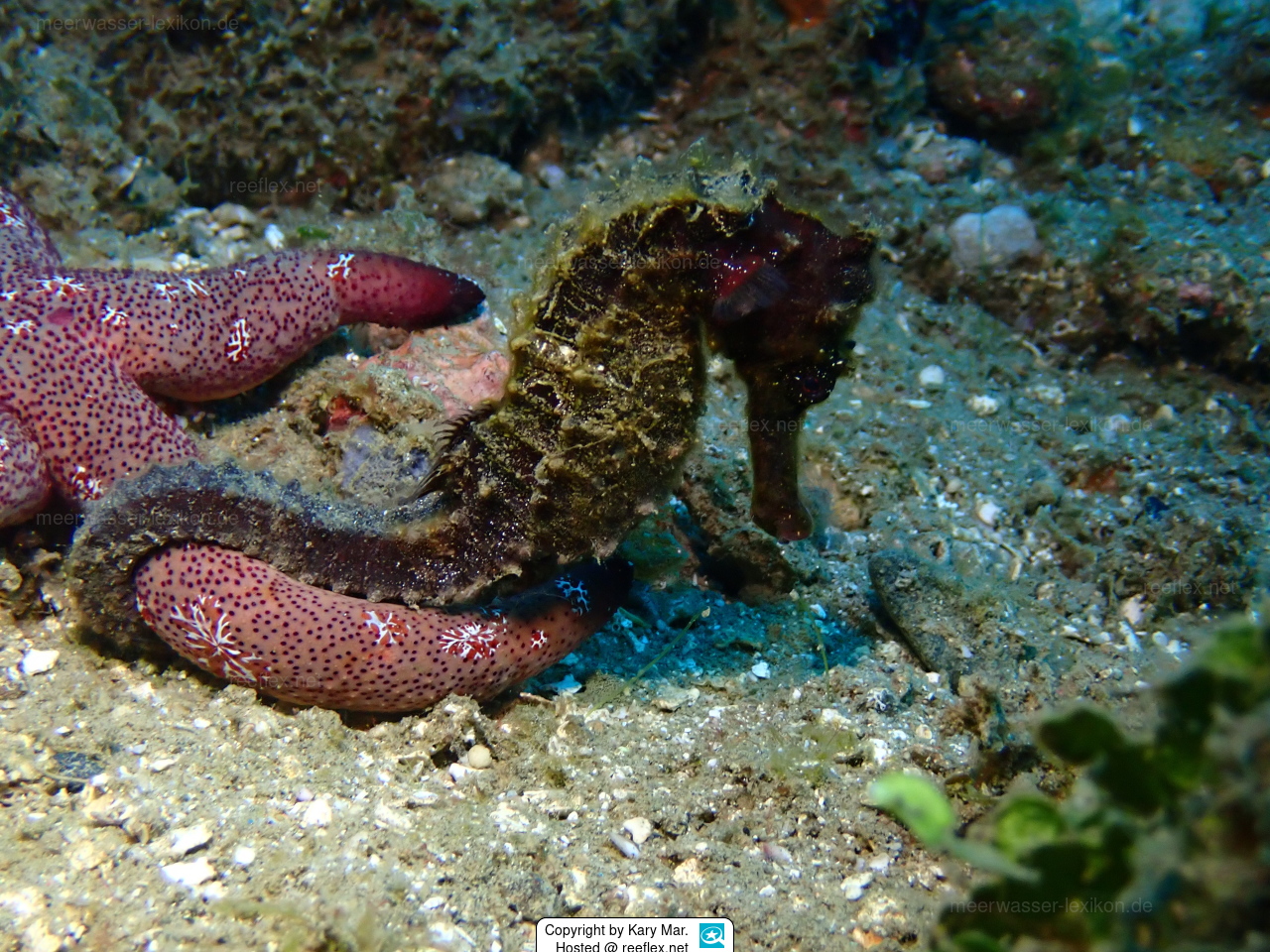Info
Hippocampus kelloggi has a relatively wide range throughout much of the Indo-Pacific. It has been recorded from Zanzibar in Tanzania, Pakistan, India, and southeast Asia, and north to China and Japan as well as Australia. This species has a suspected distribution including the east coast of Africa (North of Zanzibar), the Red Sea, the Persian Gulf and the Gulf of Oman (Lourie et al. 2004).
Hippocampus kelloggi is one of the five most reported species in international trade (Evanson et al. 2011, UNEP-WCMC 2012a), although it is unclear how much of the natural population, this trade represents.
Text source:IUCN Red List
Deep water species, associated with corals
Feeding intake.
The fish take a long time to eat at the beginning, before the food is taken up, a close inspection is carried out. After acclimatisation, the offered frozen food is eaten without problems. It should be noted that wild-caught fish behave differently than offspring when it comes to food intake. In the case of offspring, the size of the fish purchased also plays a role in the choice of food.
You can download the minimum requirements for keeping seahorses (in accordance with EC Regulation 338/97) from the Federal Agency for Nature Conservation as a PDF here: https://meerwasser-lexikon.de/downloads/BfN_Mindestanforderung_haltung_seepferdchen_hippocampus.pdf
Synonymised names
Hippocampus suezensis Duncker, 1940 · unaccepted > junior subjective synonym







 Kary Mar
Kary Mar
























































